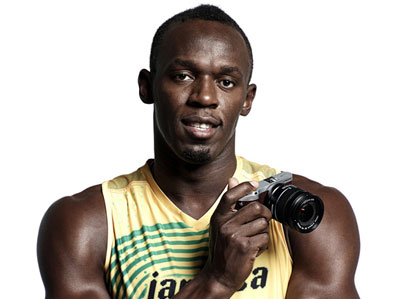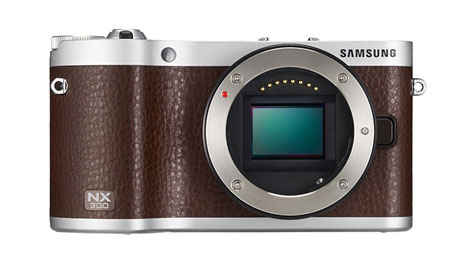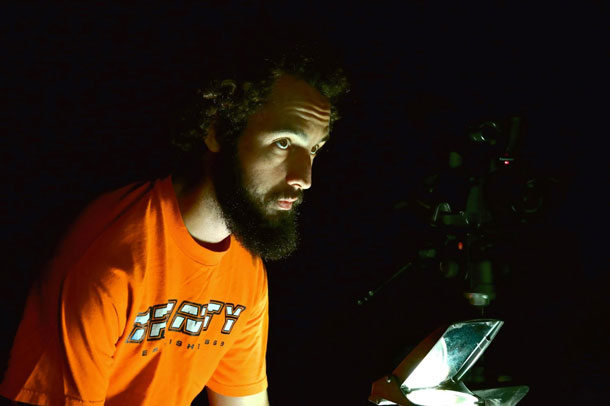Specs-wise, they got a promising lineup. Look at Samsung’s mirrorless NX300: fast AF, and I mean fast, just to mention Usain Bolt who gives his name for it. Excellent noise handling with incremental ISO steps, spot-on natural colors and tones, fantastic prime pancakes, a sleek design and don’t forget the plus of instant Wi-Fi image transfers. Even comes with free Lightroom! But who cares. On Amazon similar cameras get dozens of reviews. As of writing this, the black and white NX300 each have two reviews, the brown/leather has zero, nilch, none. How come? For less than $700 including lens!

As a consequence of lousy marketing — or because they blow the marketing budget on phones — the newcomer brand is just not on the mind of most photographers. Even if it deserves to.
Up and coming Samsung would have overcome most teething issues by now. The NX system might not exel at anything, but price levels are nice and users are raving about Samsung’s fast compact 16mm, 20mm and 30mm pancakes. They’re cheap, light, sharp, small, you name it! They’re in fact the smallest of the mirrorless bunch and offer the innovative iFn function which allows control of various camera settings via a ring and button on the lens.

How nice is that, Samsung, not trying to reinvent the hot shoe with all the the proprietary nonsense others practice. But still, hardly any photographer cares. Everyone talks Micro Four Thirds, X and NEX, but no one NX — even though Samsung has the noise and resolution advantage over Olympus and Panasonic due to the larger APS-C sensor.
They are many reasons for Samsung’s inexistence in the world of more serious photography. Even though NX cameras are perfectly capable of everything the competition does, Samsung cameras just are no status symbols yet. Lots of prejudice. Add Samsung’s lack of history. You have a Canon – oh I have one too! You have a Nikon – Nikons are great! You have a Fujifilm – they look gorgeous! You have a Samsung — seriously bro, you’re shooting a phone?!
By using an NX camera you’re safe from “mine is better and bigger than yours” behavior. Samsung photographers may still be looked at as gadget nerds, but rest assured there is much less proselytizing.
Well what if… Kirk Tuck is testing the NX300. And what if he likes it? And I’m quoting:
That brings me to the Samsung NX300. When my friend at the PR agency asked me if I wanted to test the camera I was hesitant. I thought that it was basically a copy of the Sony NEX-6 but without the grace note of an EVF. But, of course, I was wrong.
When I unboxed the camera and started playing with it I was impressed at how easy it was to learn. I intended to take it out from time to time and shoot it out of a vague sense of blogger duty but I was pretty sure I’d still spend most of my time with a Sony firmly in hand. But I was wrong. Once I took off my “water wings” (my need for an EVF at all times) and started (metaphorically) to swim along with the camera’s current, I found it to be an addicting little camera. Now, a week and half onward I am taking it everywhere. It’s sitting on my desk waiting for my afternoon walk. It will be in the camera bag (alongside the Sony A99) for a shoot tomorrow at one of my favorite, boutique ad agencies here in town.
And I’m questioning why.
But it’s really all the little stuff that I find I like. It’s almost like a human designed the interface instead of a Cylon engineer hell bent on torturing earthlings. I like the deco/disco rounded amoeba shaped handgrip on the right side and I’m now fond of the files. But mostly I’m impressed by the performance of the sensor and metering. Someone just a day or two ago mentioned that the files looked a little flat from the NX300 and I thought that was quite a compliment for a consumer oriented camera. I can easily add as much contrast and saturation as I want during post production but it’s hard as hell to scrape that stuff off a file when you camera starts out too over the top.
I read all kinds of crap from people who equate the big bodied cameras of yesteryear with “professional” photography. They dismiss really great image making machines like the OM-D, the Fujifilm X-E1, the whole Sony NEX line (but especially the NEX-7) as amateur “tools” just because they don’t conform to the design aesthetics that had their genesis in the film days.
It’s also amazing to me that most people seem to think that a camera has to excel in the capture of fast moving sports to even be considered for professional work. Yes, that’s about 1% of the professional market and wildly, in the minds of hobbyists, it comprises the entire big tent of paid photography.
It’s all so much BS. For decades the image makers I admired most worked with single sheet view cameras that shot at one frame per minute and focused, at times, in a couple of minutes (with some hard work and eye strain). Of course I am talking about the 4×5 and 8×10 cameras of ultra high dollar professionals like Richard Avedon and Irving Penn. And all my favorite fashion photographers who came after them were cranking film through their Hasselblads at the rate of maybe one frame per second and with slow going focus. The idea that we can’t realize our unique visions with the whole continuum of mirrorless digital cameras (or even good point-and-shoot cameras) is patently ridiculous.
So, what have I posted below? This is an image of Colin making psychedelic patterns on an overhead projector so he can record them on high res video for a stage production at the theater. I posted it because I was pretty amazed at how the NX handled the bright faces in the middle of blackness (metering) and the skin tones on a scene lit by only an overhead projector (color balance).
Additional plus points are: low noise at 1,600 ISO and pretty darn good image stabilization. Does this mean I am now in love with yet another camera system? Whoa, slow down there, dude. I like it. It’s really good. But it’s one member of a rich community of new cameras that seem to deliver great results in spite of not following camera design dogma. My respect is for the whole category of mirrorless, EVF enhanced cameras. So there.

If you’re in the market for a new system or want a trusty compact backup camera, give Samsung NX a good look. Especially this NX300 (brown!) seems to have an excellent screen, snappy performance, handsome looks and the physical controls one needs. BTW, the NX300 was CNET’s Editors’ Choice in April 2013… I might just give Samsung another call.


